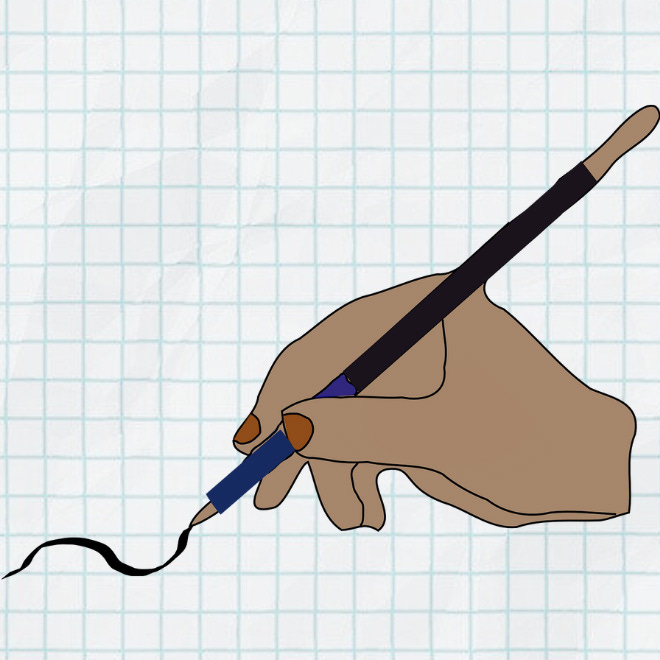Day 5: Relieve loneliness through writing
From Patricia Goodson, author of Becoming an Academic Writer
Photo (and needlework!) by Patricia Goodson
One of my favorite quotations from C.S. Lewis is this one: “We read to know we’re not alone.”
Here Lewis expresses an important truth: Reading connects us with others who either validate our own experiences or challenge them in ways that, at best, are life-transforming; at worst, make us ponder. Written text, especially books, can become true companions and, particularly for introverts, can gain the status of faithful friends.
I would add to Lewis’ claim, “We write to know we’re not alone.” Something about clothing ourselves in words and then offering up our garbed selves to others becomes an invitation, a welcome we extend to readers to validate or challenge us. We authors want to live a witnessed life, an abated solitude.
Our writing can relieve loneliness, not only through its content, but primarily because We wrote it. We wrote it in an invitation posture; as a welcome-to-communion act.
So, here’s a mini-challenge for today. As you write, think about the ways in which your writing might be a welcome companion to someone; how your words and the narratives you craft can encourage, enlighten, or endorse someone else’s questions or thoughts. How your ideas, hypotheses, and unveiling of truth can bring hope or promote justice for those whose voices are not heard as often as yours.
Conversely, how your words might unsettle those who need unsettling, challenging them to reconnect with their own, and others’, humanity. Consider how your craft can relieve someone else’s loneliness, and maybe yours as well.
I realize you may be thinking: “But I write about technical matters, science, theory…! Not personal experiences, human nature, fiction…”
Let me counter-argue: even technical writing can provide a sense of companionship to readers who identify with it. Haven’t you ever been excited about a very “techy” journal article that happened to be precisely what you were looking for at that moment, and reading it filled you with such satisfaction you could burst? I find it hard to believe that technical/academic writing cannot fulfill this expectation of communion and exchanged pleasure.
Therefore, for today, just humbly ponder the question (perhaps during a few minutes of writing): How might your writing help readers (and you) “know you’re not alone?”
If you wish to read more entries such as this one to remind yourself you’re not alone, or to help you reflect, learn, and laugh while mastering your writing tasks, I invite you to check out the books I’ve written for academic writers: 90 Days, 90 Ways: Inspiration, Tips & Strategies for Academic Writers (co-authored with Mina Beigi and Melika Shirmohammadi) and Becoming an Academic Writer: 50 Exercises for Paced, Productive, and Powerful Writing (3rd edition).
Patricia Goodson, author and professor
For more scholarly writing inspiration, check out these resources from the curators of #AcWriMoments:
ScholarShape by Margy Thomas
WriteSPACE by Helen Sword







Pat, your lovely prompt reminded me of the new mantra I had to learn upon leaving academe to start the WriteSPACE: "From features to benefits." Instead of proudly explaining how much work I've done to create all these fabulous writing resources, I had to find ways of communicating how those resources can help my readers become more stylish, productive, joyful writers. For scholarly researchers (and teachers!), an equivalent mantra might be "From content to connection." As academics, we're trained to write about what we've done -- data collection, methodology, analysis -- with little attention to our readers. The simple act of imagining a connective spark between writer and reader can bring energy to our writing and help us feel more human and alive.
Thank you for this beautiful prompt, Patricia! 🙏 It’s helping me (re)think about the name of my Substack that I plan to start posting on this month. At first I was calling it “ScholarShape Extracts” because each piece is an excerpt from the ScholarShape Archives. But that’s not the most inviting name because it’s more about what I’ve done (created the Archives and now pulling pieces out of them) than about what I’m inviting the READER to do (thanks to Helen for helping me see this!). I switched the name to the “ScholarShape Gallery,” which evokes an exploration of pieces set out for you, then the I tried “ScholarShape Sanctum,” but that doesn’t feel quite right either. Thinking about what I’m inviting my reader into today -- thanks to your prompt! -- will hopefully help me find the right answer 💫📬